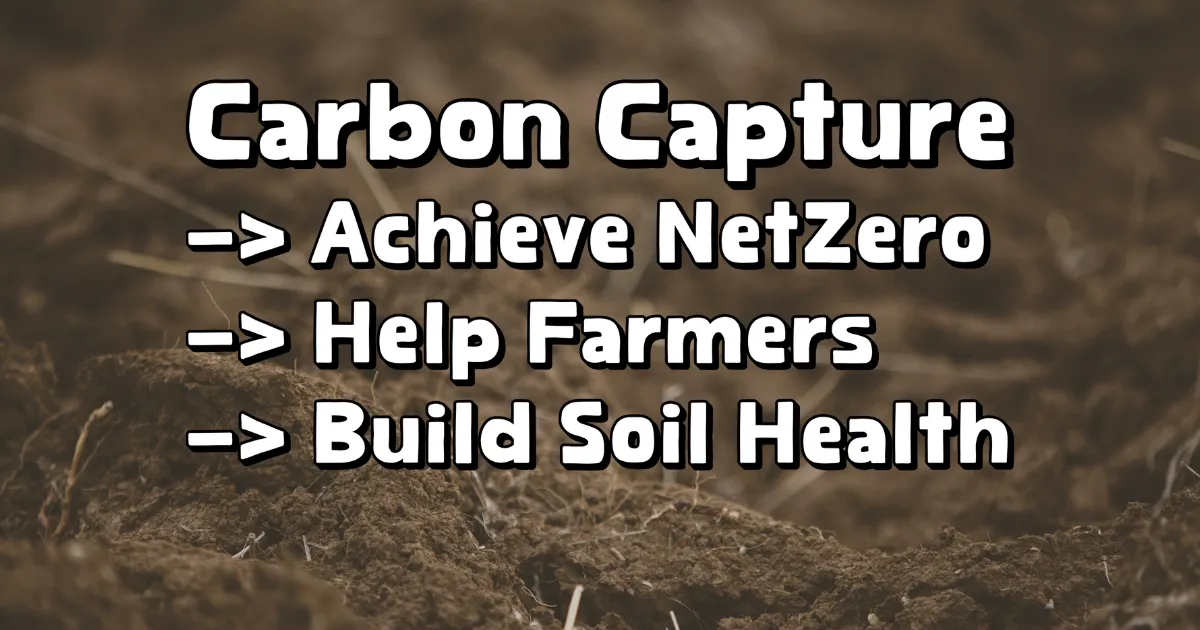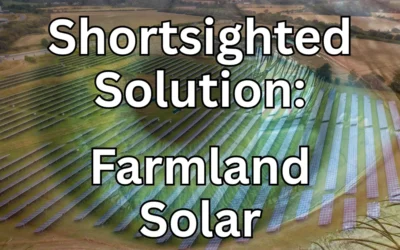Dynamic Carbon Credits is revolutionizing carbon capture by partnering with farmers to implement regenerative agriculture and biochar production. Our process captures greenhouse gases, improves soil health, creates local jobs, and uplifts underserved communities. The average family emits over 18 tons of CO2 annually—but you can offset your emissions while supporting a better future.
Ready to make a difference? Offset your personal carbon footprint today.
Anna Jacobs
Why you should care about carbon capture?
Every action we take—every mile we drive, every meal we eat—leaves a mark on the planet. For the average American, that mark adds up to 16 tons of CO₂ emissions per year, one of the highest per capita rates in the world. But what if there were a way to not only offset your personal carbon footprint but also support farmers, regenerate soil, and create local jobs?
At Dynamic Carbon Credits, we believe carbon capture can be more than just a tool for fighting climate change—it can be a force for good. By turning the fight against emissions into an opportunity to heal the planet and empower communities, we’re redefining what it means to take responsibility for your impact.
The Carbon Footprint of Everyday Life
Meet the Johnsons: a middle-aged family of four living in the suburbs. There’s Sarah and Mike, both in their early 40s, and their two elementary-aged children, Emma and Jack. Like many families, they’re busy juggling work, school, and activities, all while trying to make sustainable choices. But even with the best intentions, their daily routine adds up to a significant carbon footprint.
Morning Rush
The day starts early. Sarah brews a pot of coffee while Mike makes breakfast—scrambled eggs, toast, and orange juice for the kids. The coffee beans traveled thousands of miles to reach their kitchen, emitting 1.2 kilograms of CO2 per cup during production and transport. The eggs and bread came from industrial farms, adding another 4 kilograms of CO2 to the meal.
After breakfast, the family piles into their SUV for the morning commute. Sarah drops the kids off at school before heading to her office, while Mike drives to his job across town. Their 20-mile round trip to school and work emits 8 kilograms of CO2—and that’s just the morning drive.
Midday Activities
At lunch, Sarah grabs a salad with grilled chicken from a nearby café. While it seems like a light choice, the chicken alone contributes 6 kilograms of CO2 due to the emissions from raising and processing poultry. Meanwhile, Mike heats up a frozen meal at his office, which required energy-intensive packaging and refrigeration, adding another 3 kilograms of CO2 to his day.
Back at school, Emma and Jack enjoy their packed lunches: peanut butter sandwiches, apple slices, and juice boxes. The individually packaged juice boxes and plastic sandwich bags contribute to the family’s waste footprint, which indirectly adds to their carbon emissions.
Evening Routine
After work, Sarah and Mike pick up the kids and head to soccer practice. The 10-mile round trip emits another 4 kilograms of CO2. Dinner is spaghetti with meat sauce, a family favorite. But the ground beef in the sauce is one of the most carbon-intensive foods, contributing 27 kilograms of CO2 per pound.
After dinner, the family relaxes in front of the TV, streaming their favorite show. Streaming video might seem harmless, but it requires energy-intensive data centers, adding another 0.3 kilograms of CO2 per hour per person.
By the end of the day, the Johnsons have unknowingly emitted over 50 kilograms of CO2—just from their normal routine. Multiply that by 365 days, and their annual carbon footprint exceeds 18 tons, far above the global average of 4 tons per person.
The Problem Beneath Our Feet: Topsoil Erosion
While carbon emissions are a pressing issue, there’s another environmental crisis unfolding right beneath our feet: topsoil erosion. Over the past century, industrial farming practices have stripped away fertile topsoil at an alarming rate. Today, we’re losing soil up to 100 times faster than it can regenerate, threatening food security and the health of ecosystems worldwide.
Why is this happening? Conventional farming methods like tilling disrupt soil structure, leaving it vulnerable to erosion by wind and water. Chemical fertilizers and pesticides further degrade soil health, reducing its ability to retain nutrients and store carbon.
The good news is that regenerative agriculture is leading the way to change. Practices like no-till farming, cover cropping, and composting protect soil from erosion while rebuilding its organic matter. Healthy soil isn’t just good for crops—it’s one of the most effective tools we have for carbon capture.
Carbon Capture That Works for People and the Planet
At Dynamic Carbon Credits, we partner with farmers to implement regenerative practices that turn their land into carbon sinks—areas that absorb more carbon than they release. By focusing on soil health, we’re tackling both the climate crisis and the problem of topsoil erosion.
Here’s how our process delivers impact:
- Uplifting Farmers: We work with farmers across the country to adopt regenerative practices like no-till farming and biochar application. These methods not only capture carbon but also improve soil health and increase crop yields. By providing financial incentives and technical support, we help farmers transition to sustainable methods without taking on additional risk.
- Building Healthy Soil: Healthy soil is the cornerstone of effective carbon capture. When soil is rich in organic matter, it can store significant amounts of carbon while also retaining water and nutrients. This makes farmland more resilient to droughts and floods—an increasingly urgent need as climate change accelerates.
- Employing Local People: Our projects are designed to create jobs in the communities where they’re based. From biochar production facilities to regenerative farming initiatives, we prioritize hiring local workers and providing them with the training and resources they need to succeed.
- Capturing Greenhouse Gases: The result of all this work is a measurable reduction in greenhouse gases. For every ton of CO2 we remove from the atmosphere, we issue a high-integrity carbon credit that meets the strictest standards for additionality and permanence. These credits are then sold to individuals and families like the Johnsons who want to offset their emissions in a meaningful way.
Why Biochar Is a Carbon Capture Game-Changer
One of the most exciting tools in our carbon capture arsenal is biochar. This charcoal-like substance is made by heating organic material (like agricultural waste) in a low-oxygen environment—a process known as pyrolysis. The result is a stable form of carbon that can be buried in soil, where it remains for hundreds or even thousands of years.
Biochar isn’t just a carbon storage solution. It also improves soil fertility, reduces the need for chemical fertilizers, and helps retain water. For farmers, this means healthier crops and lower costs. For the planet, it means a scalable, cost-effective way to remove carbon from the atmosphere.
A Better Future Starts with You
The Johnsons’ story is all too familiar. Like many families, they want to do their part for the planet but feel overwhelmed by the scale of the problem. That’s where Dynamic Carbon Credits comes in.
By offsetting your carbon footprint through high-integrity credits, you’re not just neutralizing your emissions—you’re making an investment in a better future. You’re helping farmers across the country adopt regenerative practices that rebuild soil health and capture carbon. You’re supporting local workers who now have stable jobs at biochar facilities. And you’re taking responsibility for your impact on the planet.
Every ton of CO2 you offset is a step toward a healthier planet, a stronger community, and a brighter future. This isn’t just about numbers or statistics—it’s about people, families, and the choices we make every day.
Imagine the difference you can make:
- Offset your commute and school drop-offs.
- Neutralize the impact of your family meals.
- Balance out your energy use and streaming habits.
You have the power to turn your daily routine into a force for good. Offset your carbon footprint today with Dynamic Carbon Credits, and join us in building a future where carbon capture uplifts farmers, heals the soil, and transforms lives.






